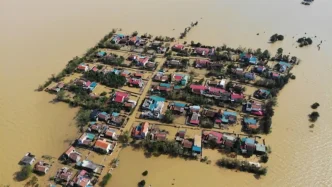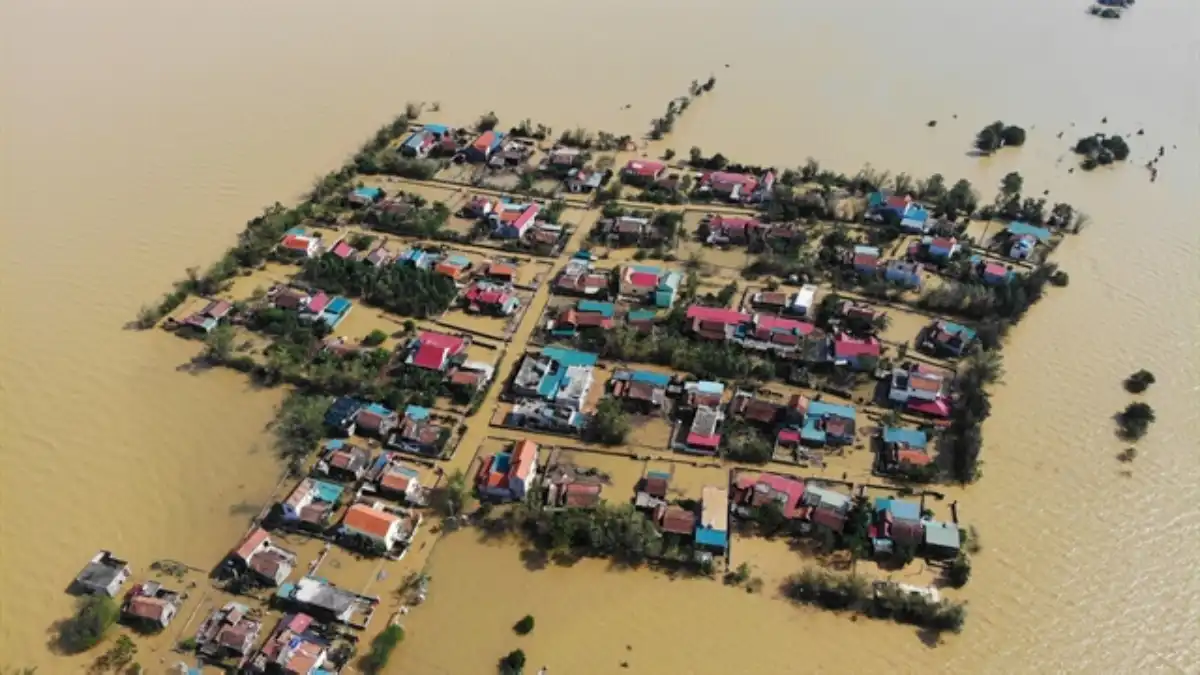Vietnam is intensifying efforts to bolster urban flood forecasting as climate change exacerbates the frequency and severity of flooding in its densely populated cities. With rising sea levels and increasingly erratic weather patterns, the government is prioritizing advanced technologies and infrastructure upgrades to protect millions of residents in low-lying areas like Ho Chi Minh City and Hanoi. This push reflects a broader recognition of the urgent need to adapt to environmental challenges that threaten economic stability and public safety across the region.
A Growing Threat to Urban Centers
Flooding has long been a challenge for Vietnam, a country with extensive river systems and a coastline stretching over 3,260 kilometers. The Mekong Delta, often referred to as the nation’s rice bowl, and urban hubs like Ho Chi Minh City face annual inundations that disrupt lives and damage property. According to data from the Ministry of Natural Resources and Environment, sea levels along Vietnam’s coast have risen by an average of 3.6 millimeters per year over the past three decades, a trend accelerating due to global warming. This rise, coupled with rapid urbanization, has left cities more vulnerable as natural drainage systems are replaced by concrete landscapes.
In Hanoi, heavy rains in recent years have overwhelmed outdated drainage infrastructure, turning streets into rivers and displacing thousands. Ho Chi Minh City, home to over 9 million people, faces similar issues, with flooding costing the local economy millions annually in damages and lost productivity. The stakes are high: Vietnam’s urban population is projected to reach 45% of the total by 2030, up from 33% in 2020, placing even greater pressure on infrastructure to keep pace with growth.
Government Response and Technological Innovation
Recognizing the scale of the challenge, Vietnam’s government has rolled out a series of initiatives aimed at improving flood forecasting and urban resilience. The Ministry of Agriculture and Rural Development, in collaboration with international partners, is investing in real-time weather monitoring systems and predictive modeling tools. These technologies aim to provide early warnings to local authorities and residents, allowing for quicker evacuations and resource deployment during extreme weather events.
One key project involves the deployment of advanced radar systems and satellite data to track rainfall patterns with greater accuracy. This data is fed into centralized platforms that map flood risks in real time, helping city planners identify vulnerable areas and prioritize interventions. In addition, the government is working with the Asian Development Bank to fund infrastructure projects, including the construction of flood barriers and improved drainage networks in major cities.
Beyond technology, Vietnam is also revising urban planning policies to incorporate climate resilience. New regulations mandate that major developments in flood-prone areas include green spaces and permeable surfaces to reduce runoff. While these measures represent a step forward, experts caution that implementation remains uneven, particularly in rapidly growing secondary cities where oversight is often limited.
Regional and Global Context
Vietnam’s efforts are part of a broader regional push to address climate risks in Southeast Asia, a region particularly vulnerable to rising sea levels and extreme weather. Neighboring countries like Thailand and the Philippines have faced similar challenges, with Bangkok and Manila frequently grappling with severe flooding. Vietnam’s approach, which emphasizes technology-driven forecasting, could serve as a model for others, though funding and technical capacity remain hurdles for smaller nations in the region.
Globally, Vietnam’s initiatives align with commitments made under the Paris Agreement, where the country pledged to reduce greenhouse gas emissions and enhance adaptive capacity. International donors, including the World Bank and the European Union, have provided financial and technical support, but officials acknowledge that domestic resources must also be mobilized to sustain long-term progress. The cost of inaction is stark: unchecked flooding could displace millions and derail Vietnam’s economic growth, which has averaged around 6% annually over the past decade.
Challenges and Public Sentiment
Despite these efforts, significant challenges remain. One major issue is the coordination between central and local governments. While national policies set ambitious targets, implementation often falls to under-resourced municipal authorities, leading to delays and inefficiencies. In Ho Chi Minh City, for instance, residents have criticized the slow pace of drainage upgrades, with many neighborhoods still flooding after moderate rainfall.
Public awareness is another concern. While urban flooding is a shared experience for many Vietnamese, not all residents are familiar with evacuation protocols or early warning systems. Community outreach programs are being expanded, but language barriers and limited access to technology in rural-to-urban migrant communities can hinder effectiveness. Engaging these populations is critical, as they often live in the most vulnerable areas, such as informal settlements along riverbanks.
Moreover, there is the question of funding. Upgrading infrastructure and deploying cutting-edge forecasting systems require substantial investment, and Vietnam’s budget is already stretched across competing priorities like healthcare and education. While international aid helps, some policymakers argue that public-private partnerships could play a larger role in bridging the gap, though such arrangements must be carefully managed to avoid profiteering at the expense of public welfare.
Looking Ahead: A Race Against Time
As climate change accelerates, Vietnam finds itself in a race against time to protect its urban centers from flooding. The government’s focus on forecasting and infrastructure offers hope, but success will depend on sustained commitment, adequate funding, and effective coordination across all levels of society. For cities like Hanoi and Ho Chi Minh City, the coming years will test whether these measures can keep pace with the growing risks posed by a warming planet.
For now, millions of Vietnamese continue to adapt to the realities of life in flood-prone areas, their resilience a testament to the nation’s enduring spirit. Whether these new initiatives will provide lasting protection remains an open question, one that will shape the future of urban life in Vietnam for decades to come.
















